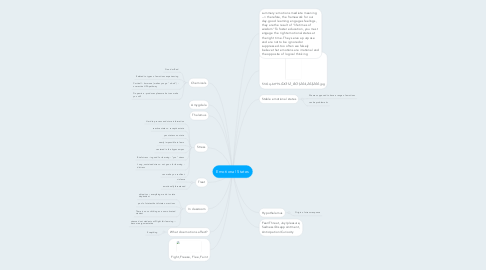Emotional States
by traylor white

1. Thalamus
2. Amygdala
3. What do emotions affect?
3.1. Everything
4. Chemicals
4.1. Good or Bad
4.2. Related to types of emotions experiencing
4.3. Cortisall - hormone (makes you go "uh-oh") - overactive HPA pathway
4.4. Dopamine - produces pleasure but can make you still
5. In classroom
5.1. ubiquitus -- everything we do is state dependent
5.2. pool of states that dictate our actions
5.3. There is no such thing as a unmotivated student
5.4. stressed out students will fight thir learning -- become argumentative
6. Fight, Freeze, Flee, Faint
7. Stress
7.1. Hard to process and store information
7.2. reactive state vs. receptive state
7.3. yes state vs no state
7.4. nearly impossible to learn
7.5. centered in the hypocampus
7.6. Brief stress - is good for learning - "you" stress
7.7. Long, sustained stress - not goos for learning - distress
7.8. can make you resilient
8. Treat
8.1. violence
8.2. emotionally threatened
9. 51iGq-btY9L._SX312_BO1,204,203,200_.jpg
10. Hypothalamus
10.1. Origin of stress response
11. Fear/Threat, Joy/pleasure, Sadness/Disappointment, Anticipation/Curiocity
12. Stable emotional states
12.1. We are supposed to have a range of emotions
12.2. can be problematic
13. summary: emotions mediate meaning --> therefore, the framework for our day. good learning engages feelings, they are the result of "lifetimes of wisdom"To foster education, you must engage the right emotional states at the right time. They serve a purpose and are not to be ignored or suppressed. too often we falsely believe that emotions are irrational and the opposite of logical thinking


